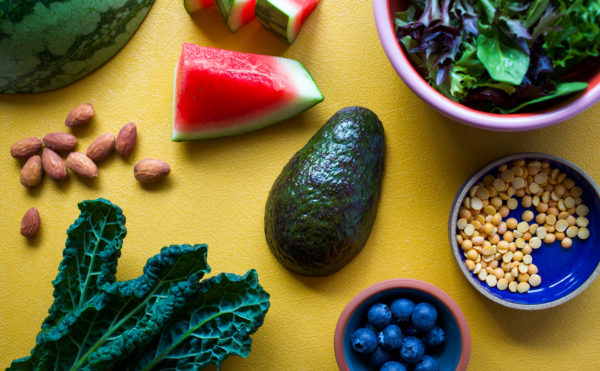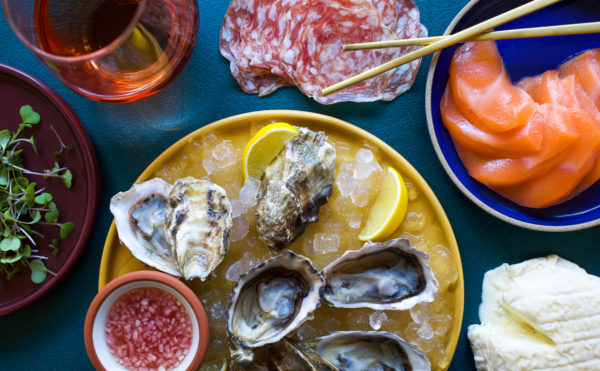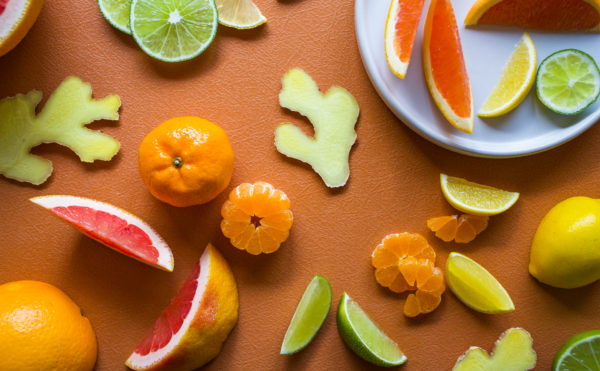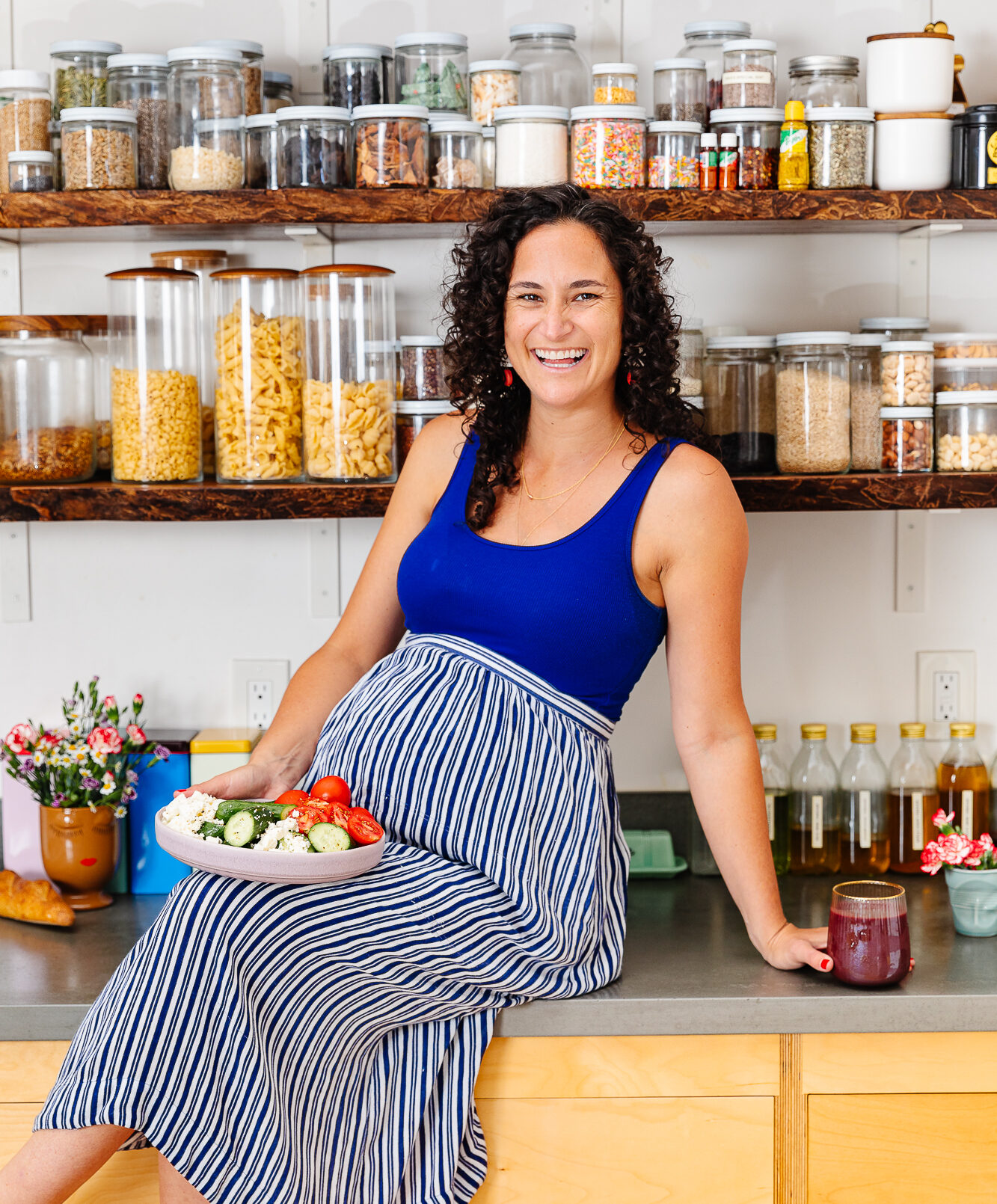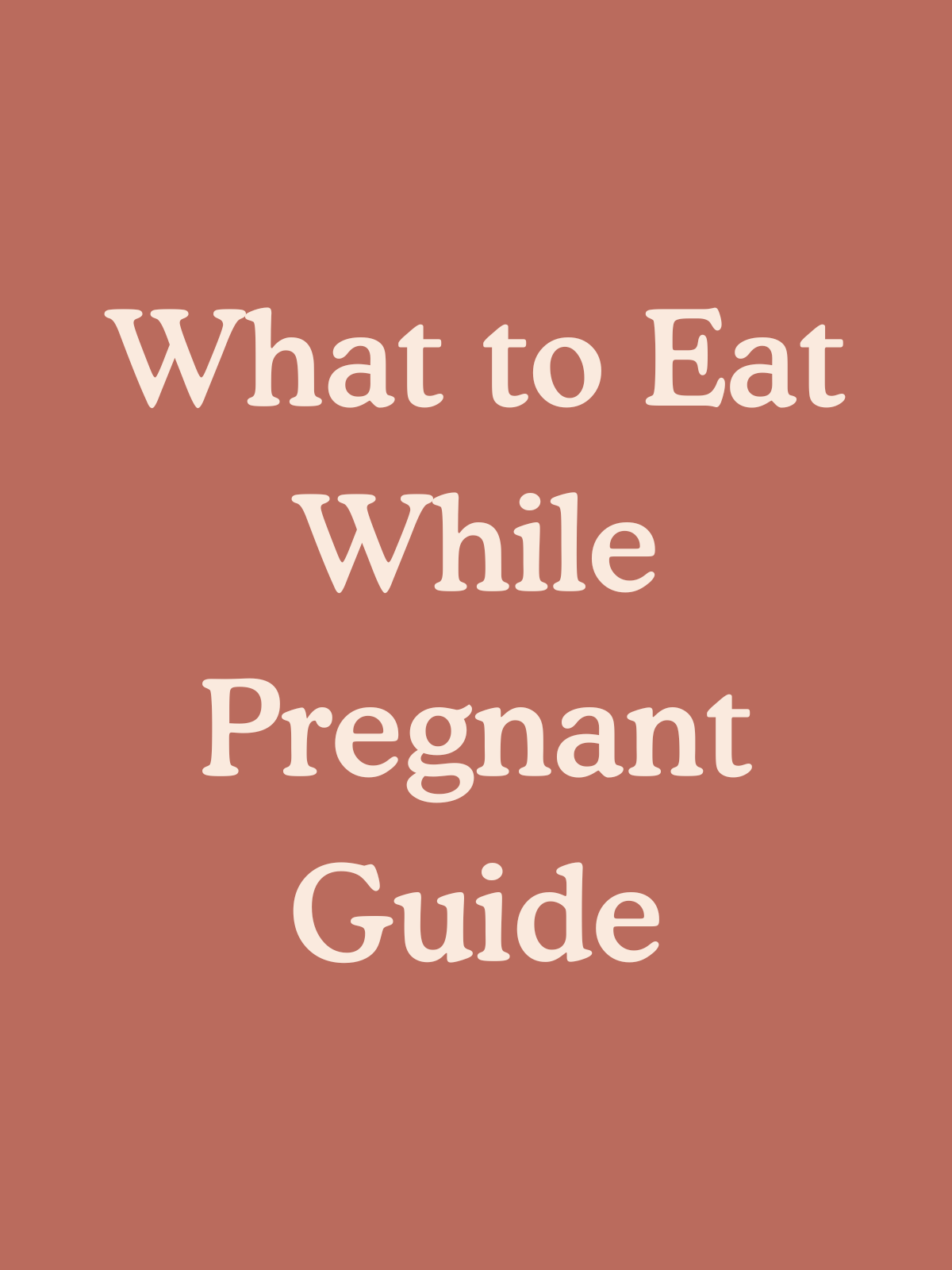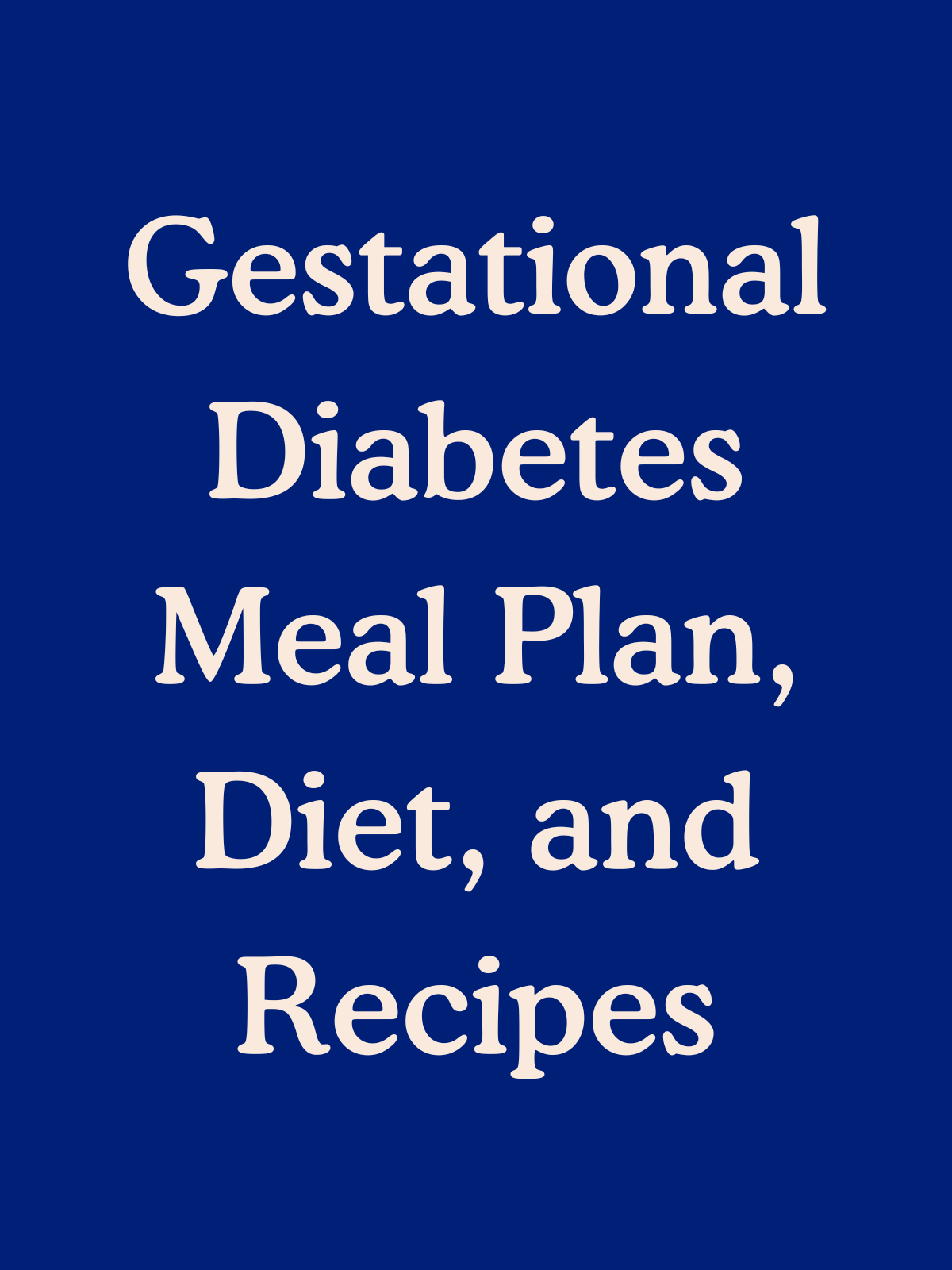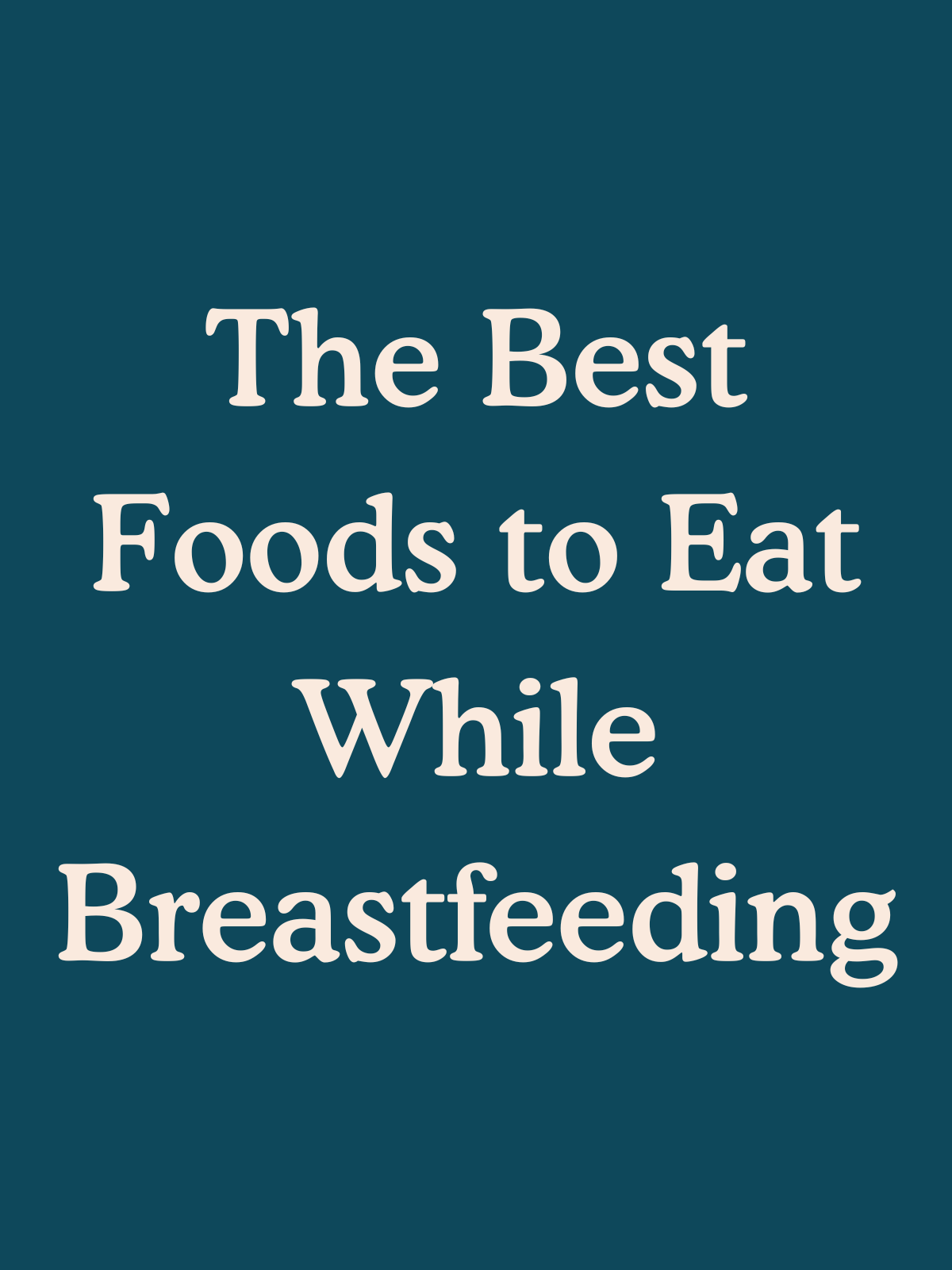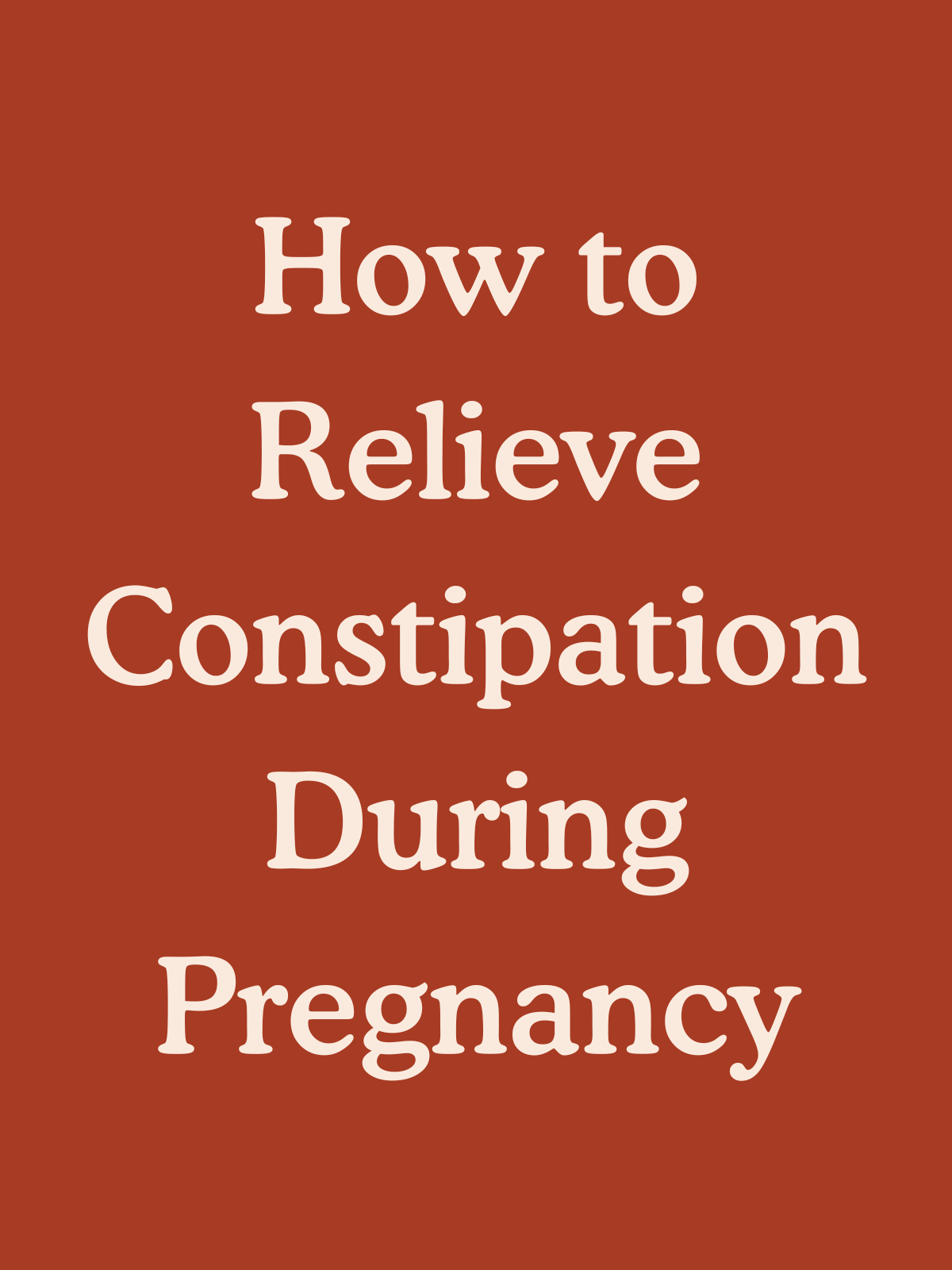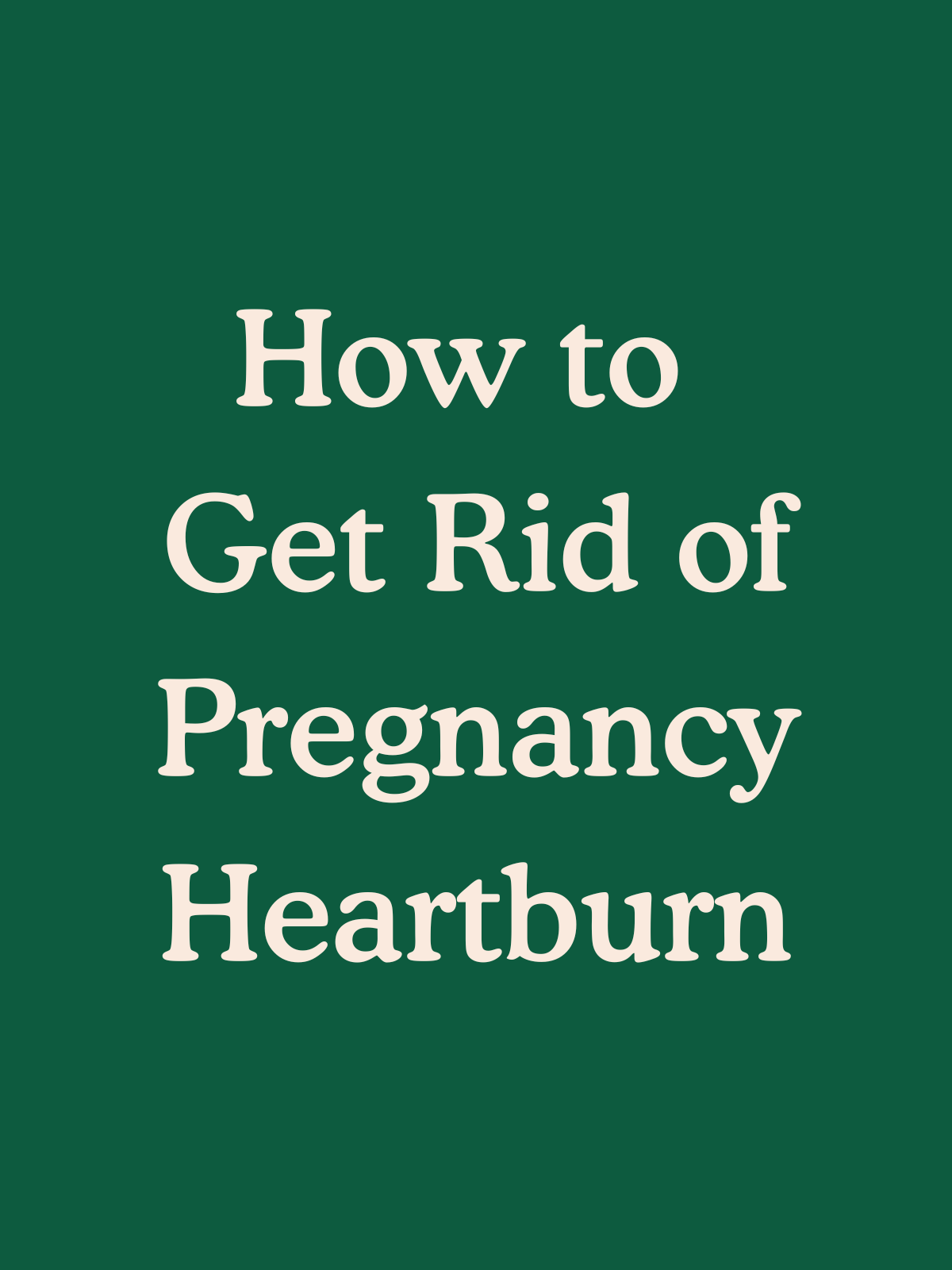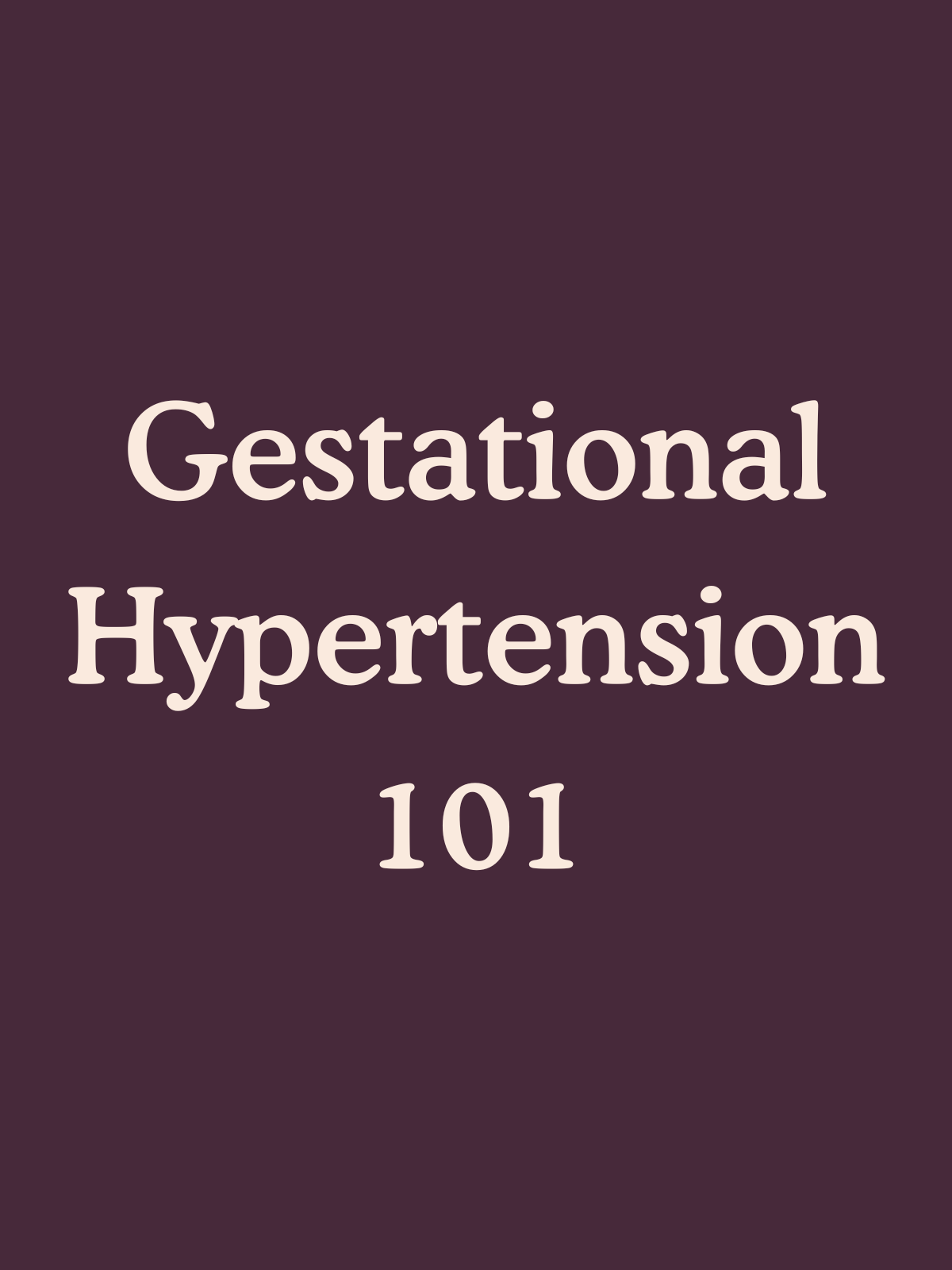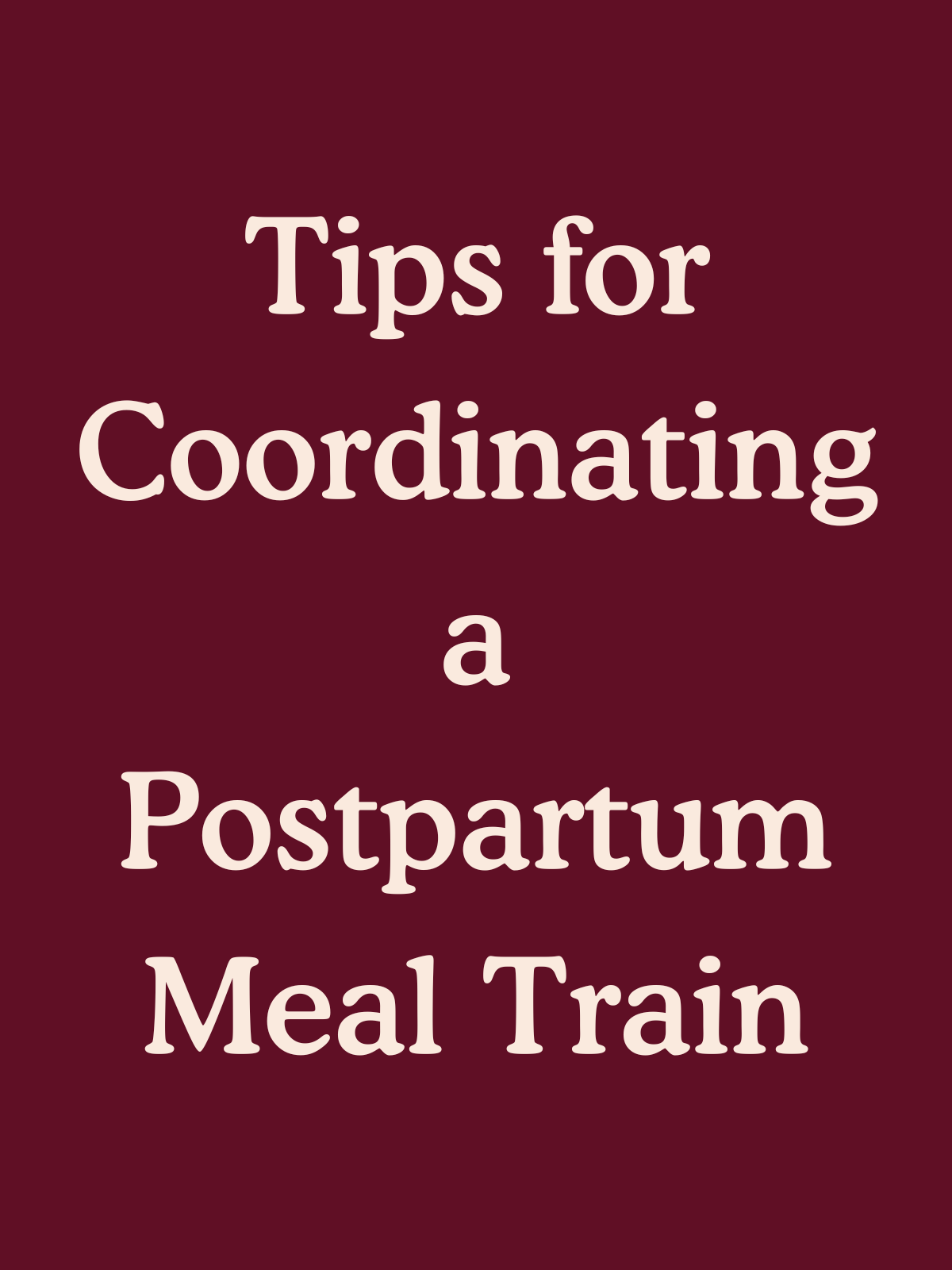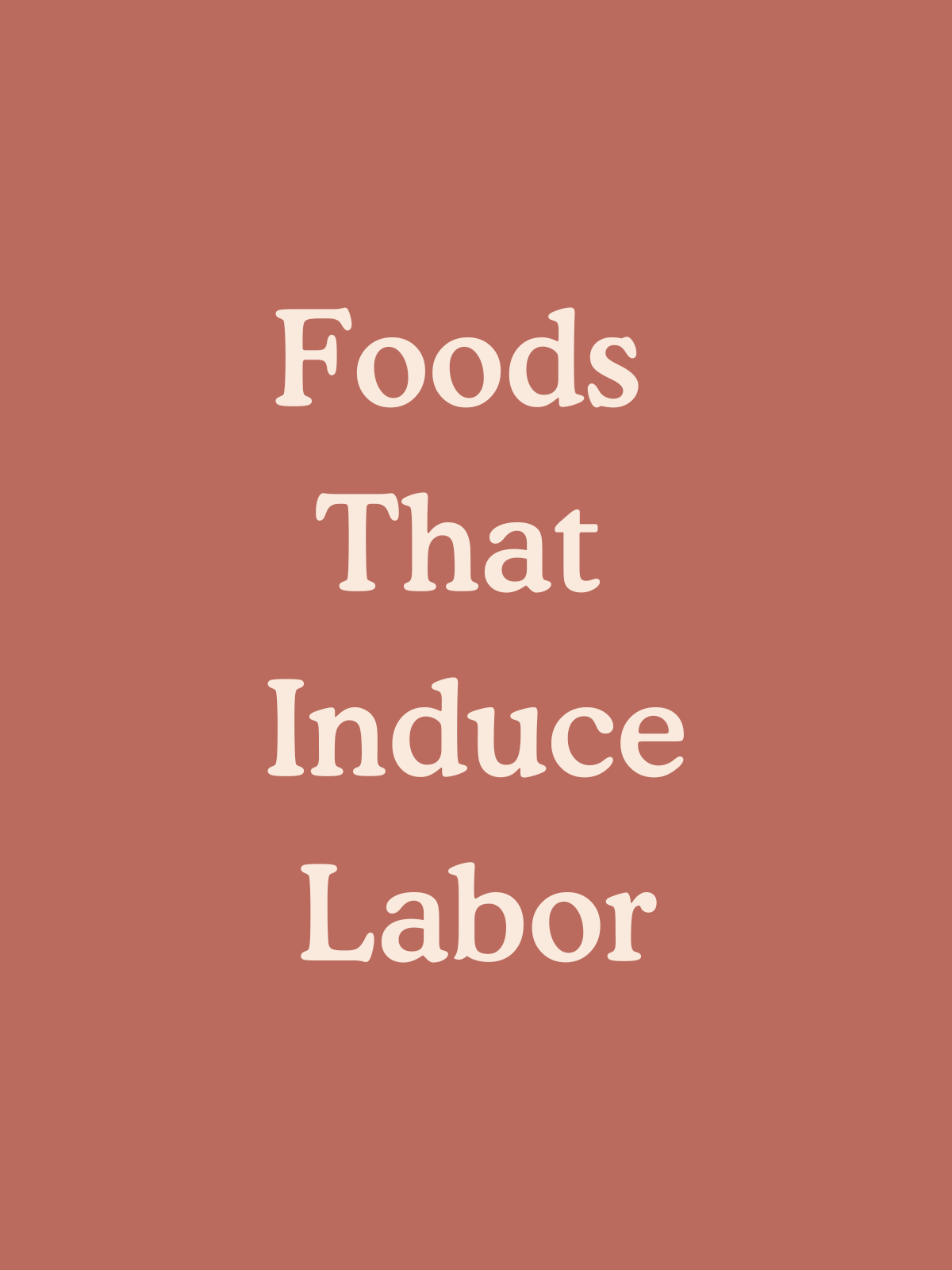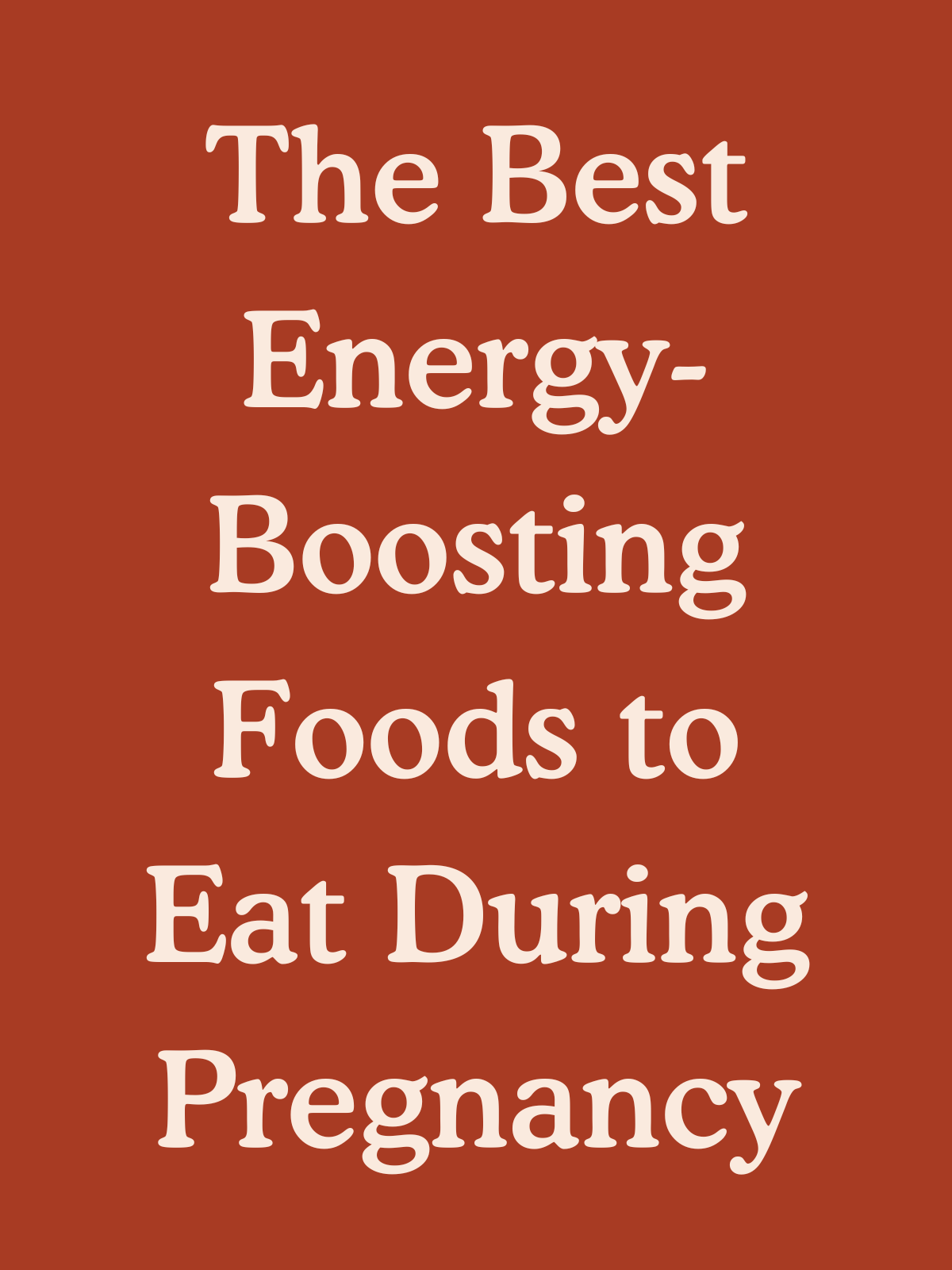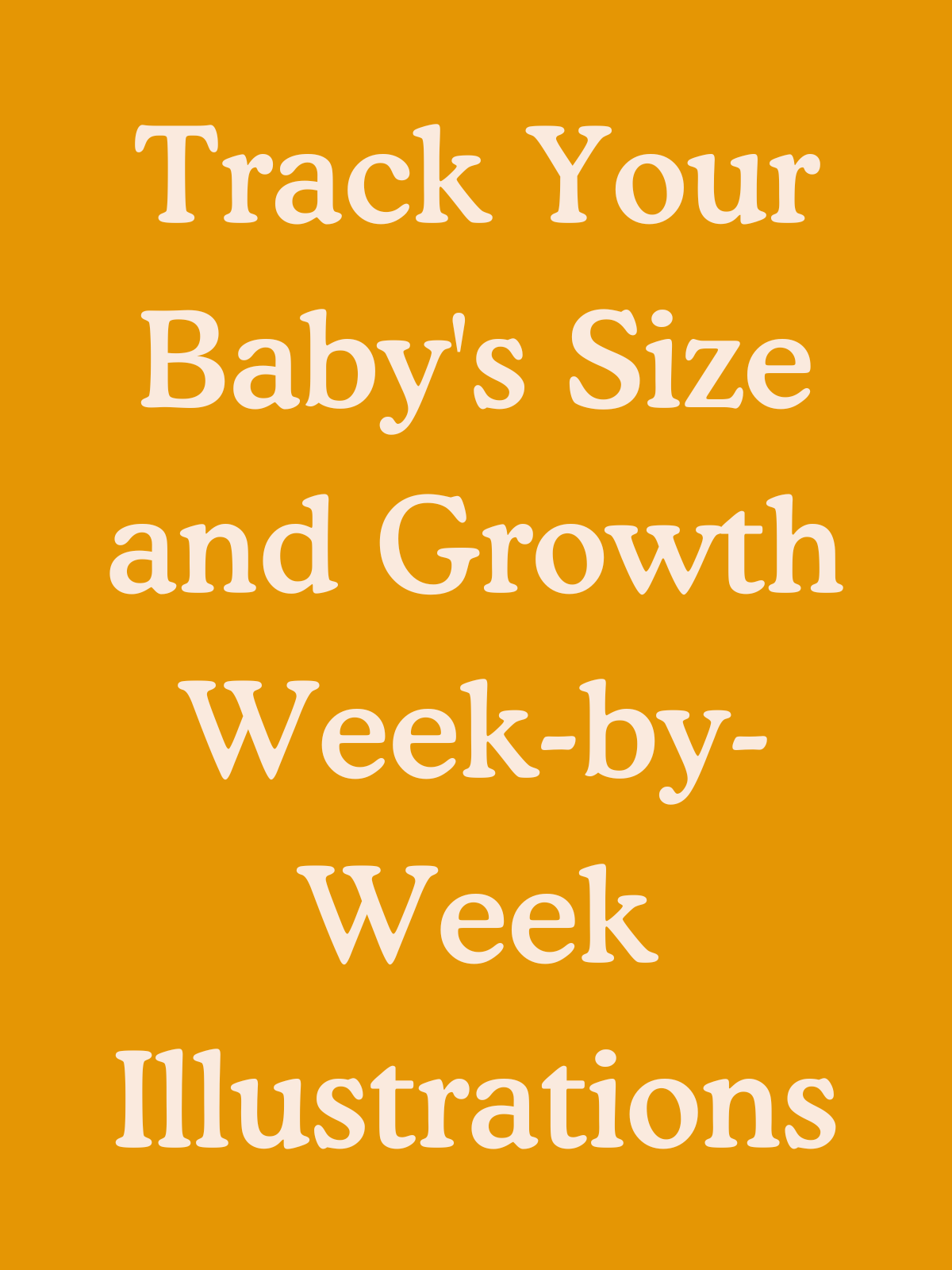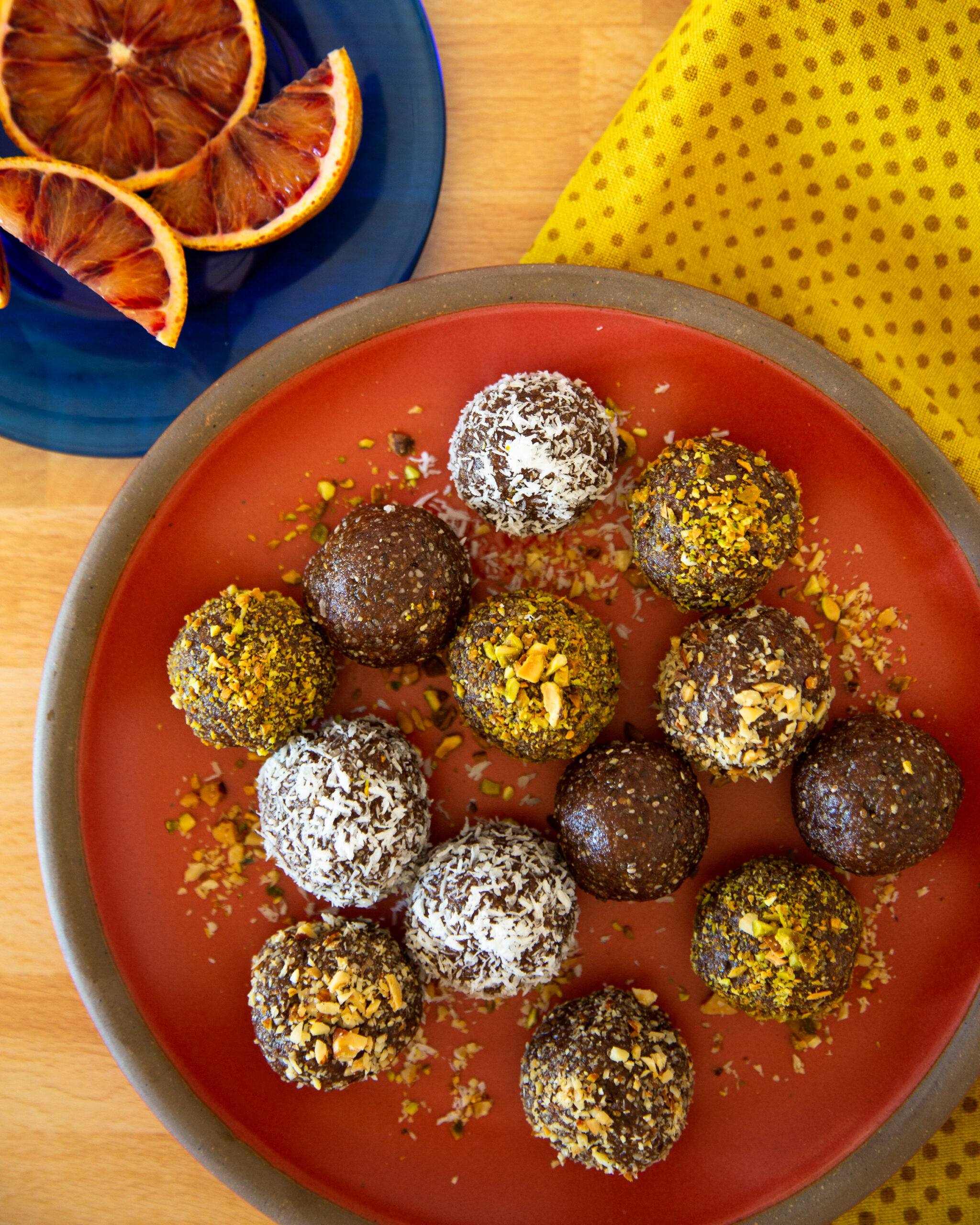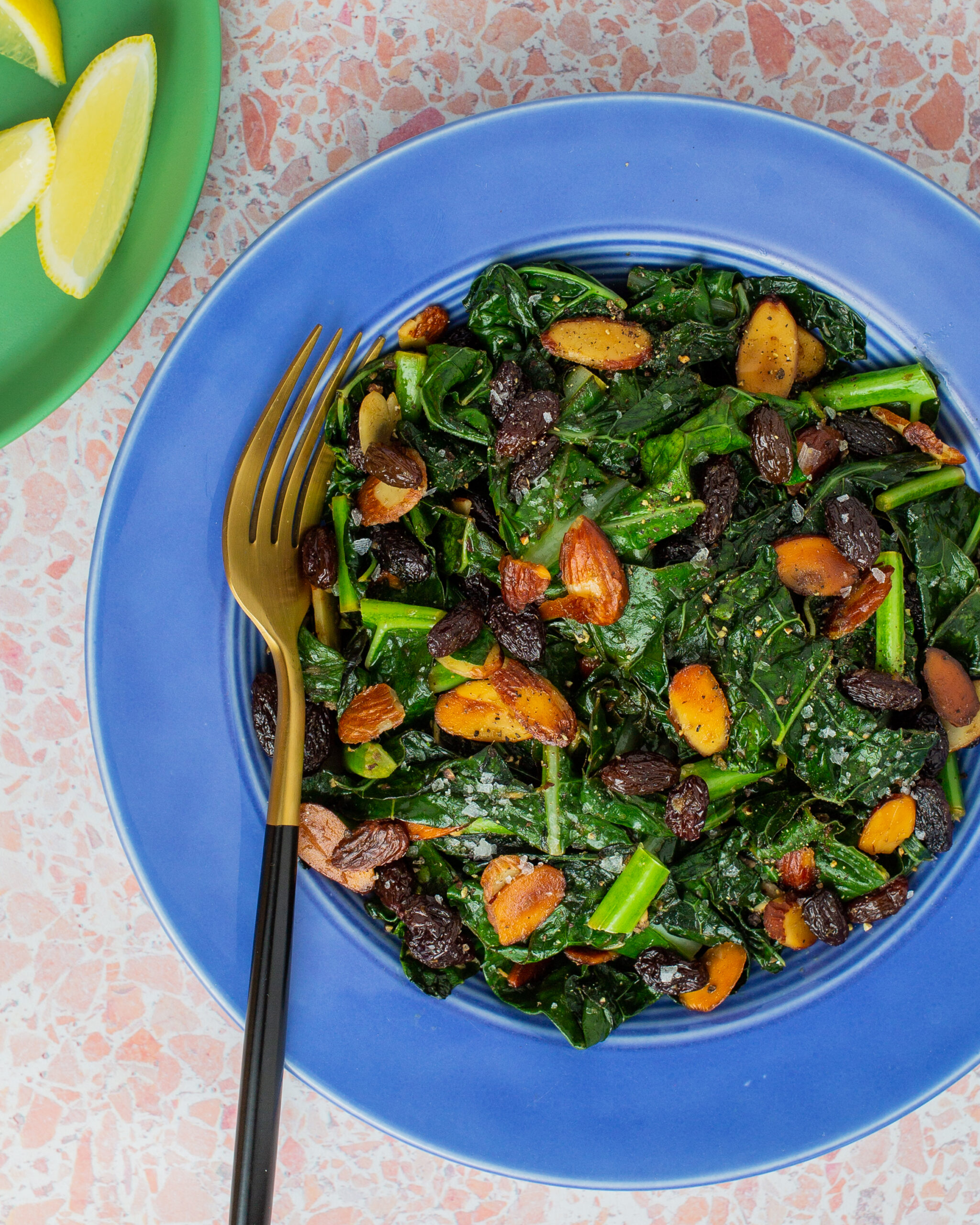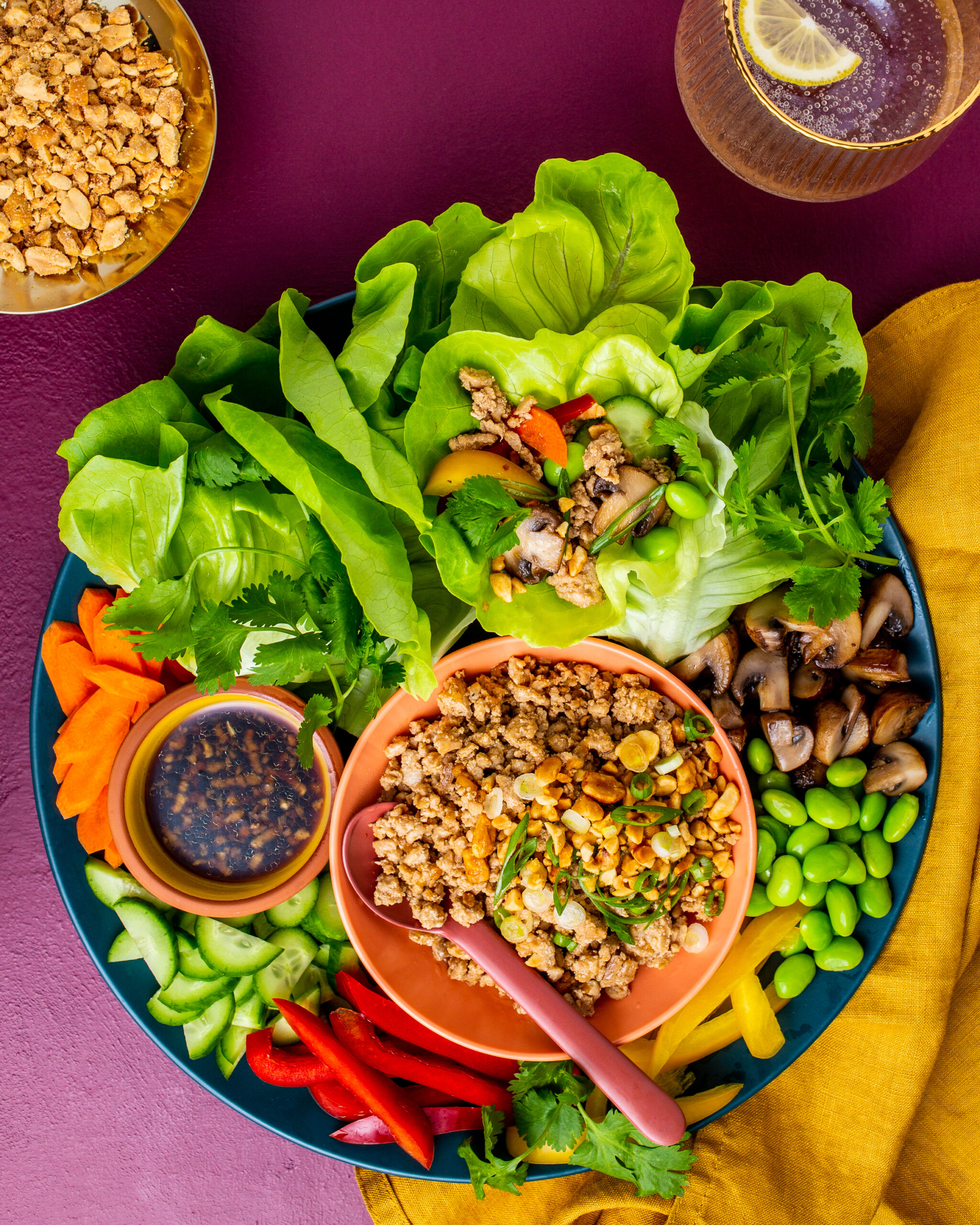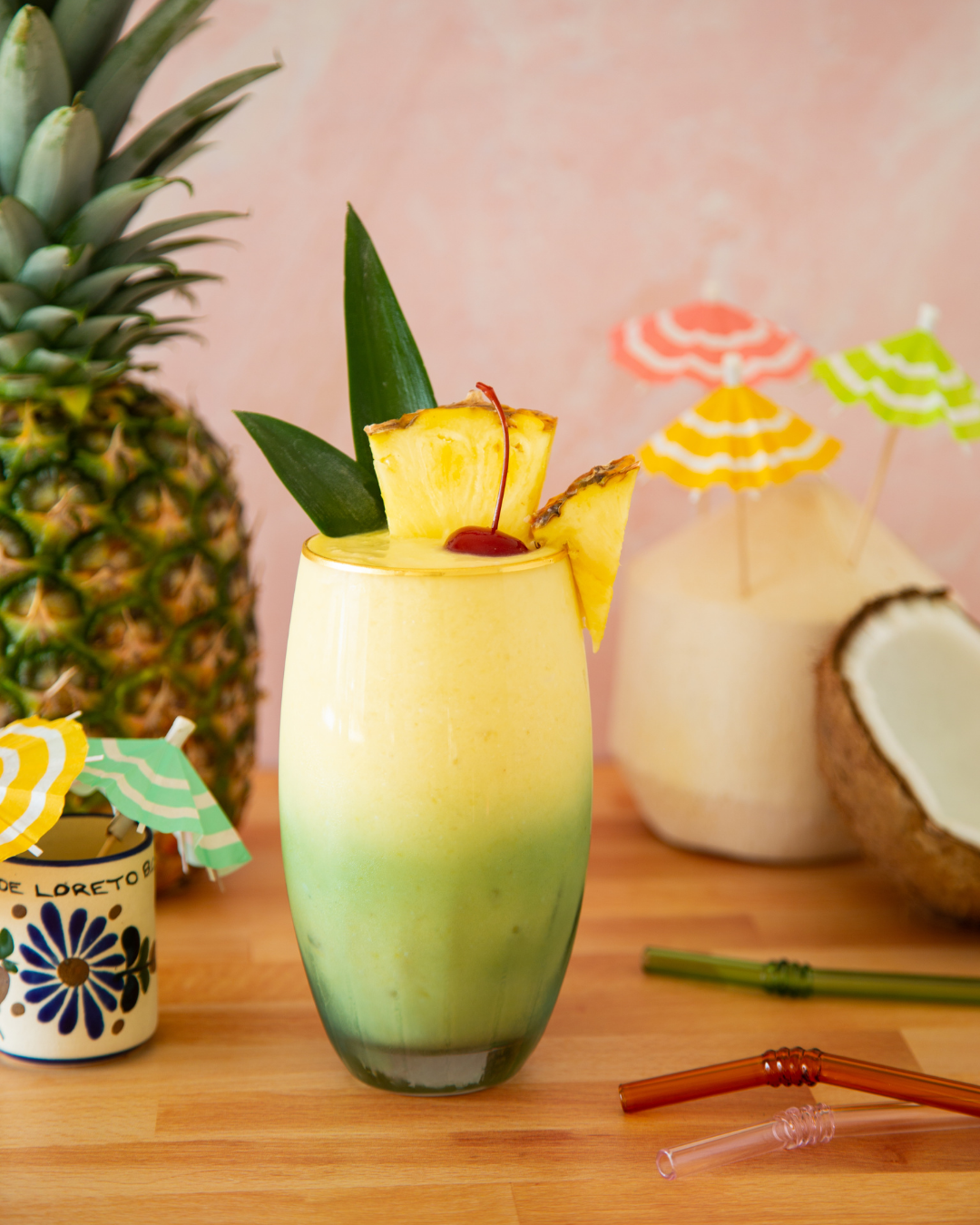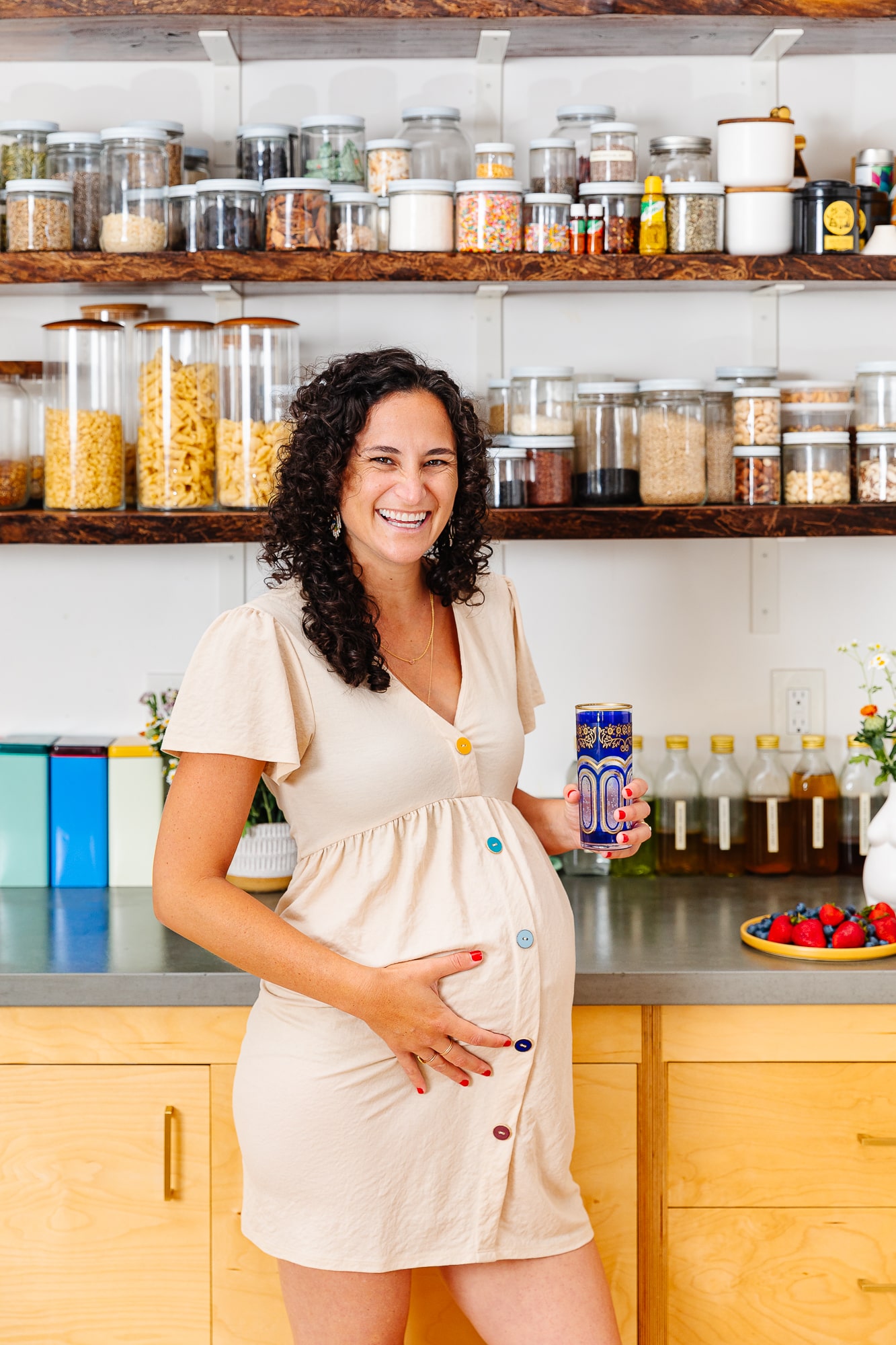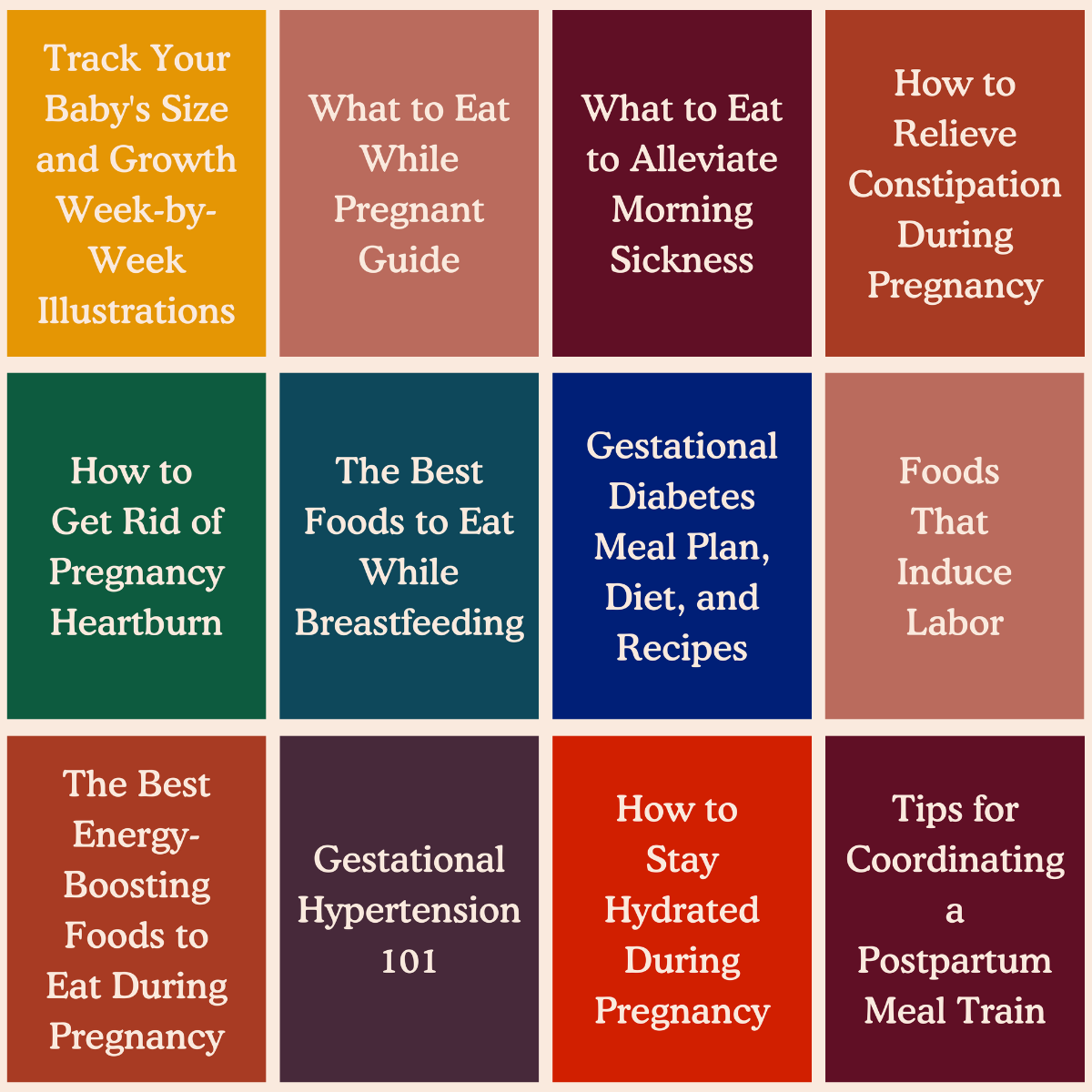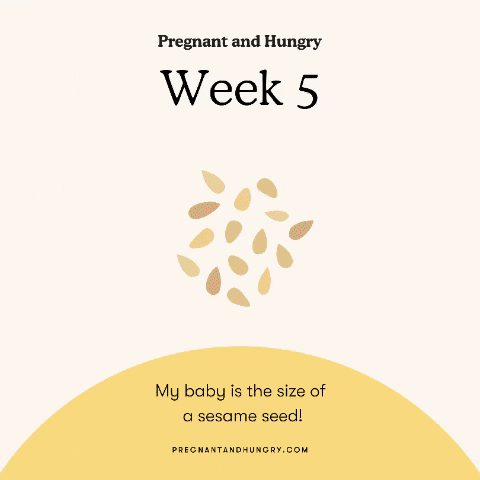Breastfeeding Superfoods: 6 Recipes For Your Postpartum Diet
December 18, 2023
Bringing your newborn home from the hospital is a magical time! However, it’s also a time for healing. Add to this your baby’s dependence on your body for breast milk and you realize that even though pregnancy is over, you still have to pay attention to your diet! There are a few breastfeeding superfoods that can help boost lactation and are nutrient-dense to help your postpartum body bounce back.
Which Foods Increase Breast Milk?
When it comes to the best diet for breastfeeding mothers to increase milk, going back to the basics of good nutrition is a great place to start. This means focusing on whole grains, fruits and vegetables, animal protein, nuts and seeds, as well as dairy products. When you support your body through healthy food you’re creating an environment for optimal breast milk production.
This also means eating enough! According to the CDC, breastfeeding mamas need an extra 330 to 400 kilocalories per day to be well nourished. We suggest creating a breastfeeding meal plan that includes three meals a day as well as snacks.
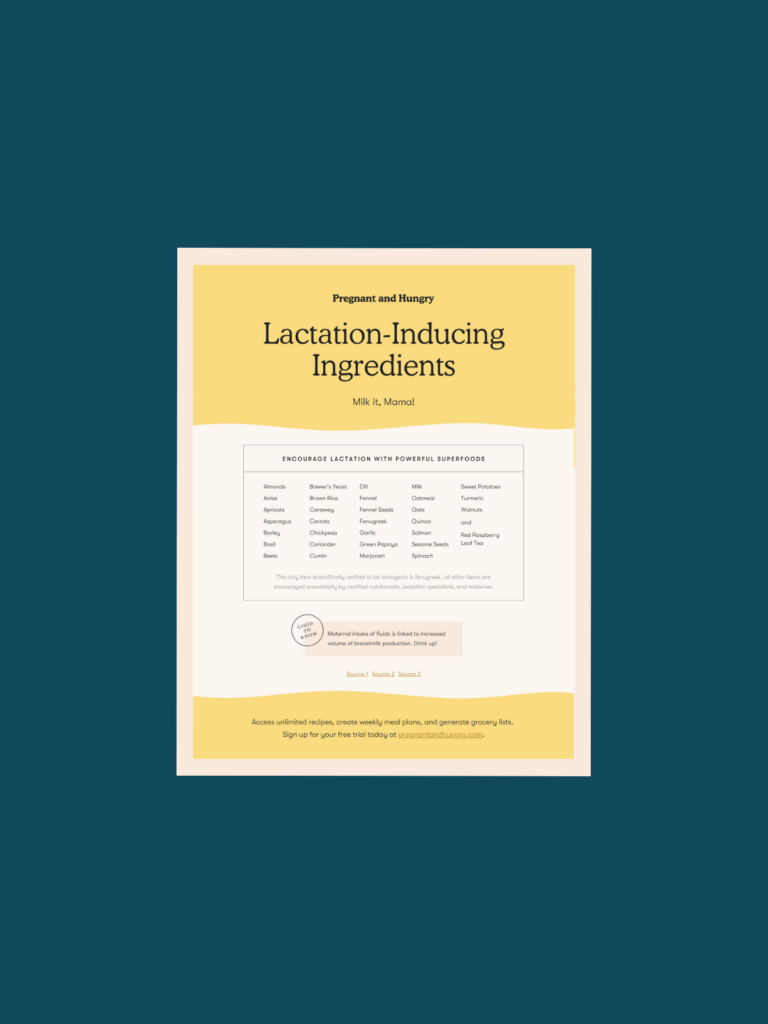
The Best Foods to Eat While Breastfeeding
Lactation-Inducing Ingredients To Boost Your Milk Supply
Get the GuideIf you’re looking to make more milk by eating powerful superfoods, you’ve come to the perfect page. This guide includes a list of what to eat, drink, and savor for mamas wanting to encourage lactation!
A peek inside:
- The best fruits and veggies for increasing breastmilk supply
- Breastfeeding superfoods: nuts, herbs, seeds, and grains
- Lactogenic legumes
- Dairy (that’s right: milk intake = milk output)
Include these foods in your meals:
Oily Fish
Fish continues to be a healthy choice postpartum as it’s good for both you and your baby. “It’s high in protein and contains omega-3 fats, which are important for optimal development of a baby’s nervous system,” says The Bump. Omega-3 fatty acids have also been shown to reduce postpartum depression.Opt for low-mercury options including salmon, sardines, shrimp, and anchovies.
Avocados
Avocados are a lactation superfood because it’s a healthy source of fats which can help breastfeeding mamas keep up with the caloric demands. They’re also full of important vitamins, including vitamin K, folate, potassium, vitamin C, and vitamin E.Oats
Oats are a galactagogue—a fun word for foods that increase breast milk! “They contain a type of fiber called beta-glucan that may raise prolactin [a hormone that stimulates milk production after childbirth] levels in the body,” explains Verywell Family.Leafy Green Vegetables
Stock up on broccoli, spinach, and kale as these veggies contain phytoestrogens (estrogen-like compounds) which have been shown to help with milk production.
Nuts And Seeds
Nuts and seeds are fantastic snack foods for postpartum women. They nourish you with their content of protein, healthy fats, iron, calcium, and zinc. Parents highlights hemp seeds, flaxseeds, chia seeds, and almonds as healthy additions to a postpartum diet.What Drinks Increase Breast Milk?
Hydrating is an important aspect of breast milk production. “An adequate water intake is essential when you’re breastfeeding. Try to drink a glass of water every time you feed your baby,” advises WebMD. Water makes up the majority of breast milk, and this is the only source of hydration for newborns. You can also opt for milk as it provides you with protein, calcium, and other essential nutrients to support breastfeeding.It’s also a good idea to continue to limit your caffeine intake as caffeine transfers to your baby through breast milk and can impact their sleep. “If you notice that your little one seems more fussy, irritable, wide awake or hyper when you’ve had a few cups of coffee, you might want to cut back a bit and see if you notice an improvement,” says What To Expect.
Instead, consume herbal teas, such as our Milk Makin’ Herbal Blend. This tea contains the galactagogue, fenugreek, which has been shown to boost breast milk supply.

Staying hydrated isn’t just about drinking water, it’s about eating the right foods, too! This guide gives you a full list of all the hydrating foods and liquids you can add to your diet to fight constipation, increase maternal blood volume, and keep you hydrated!
A peek inside:
- The most hydrating fruits: citrus, melons, berries
- The best veggies and leafy greens for pregnancy hydration
- Pregnancy-safe herbal teas
- Plus a list of liquids to sip on all day long
Try these breakfast, lunch, and dinner recipes that contain breastfeeding superfoods:
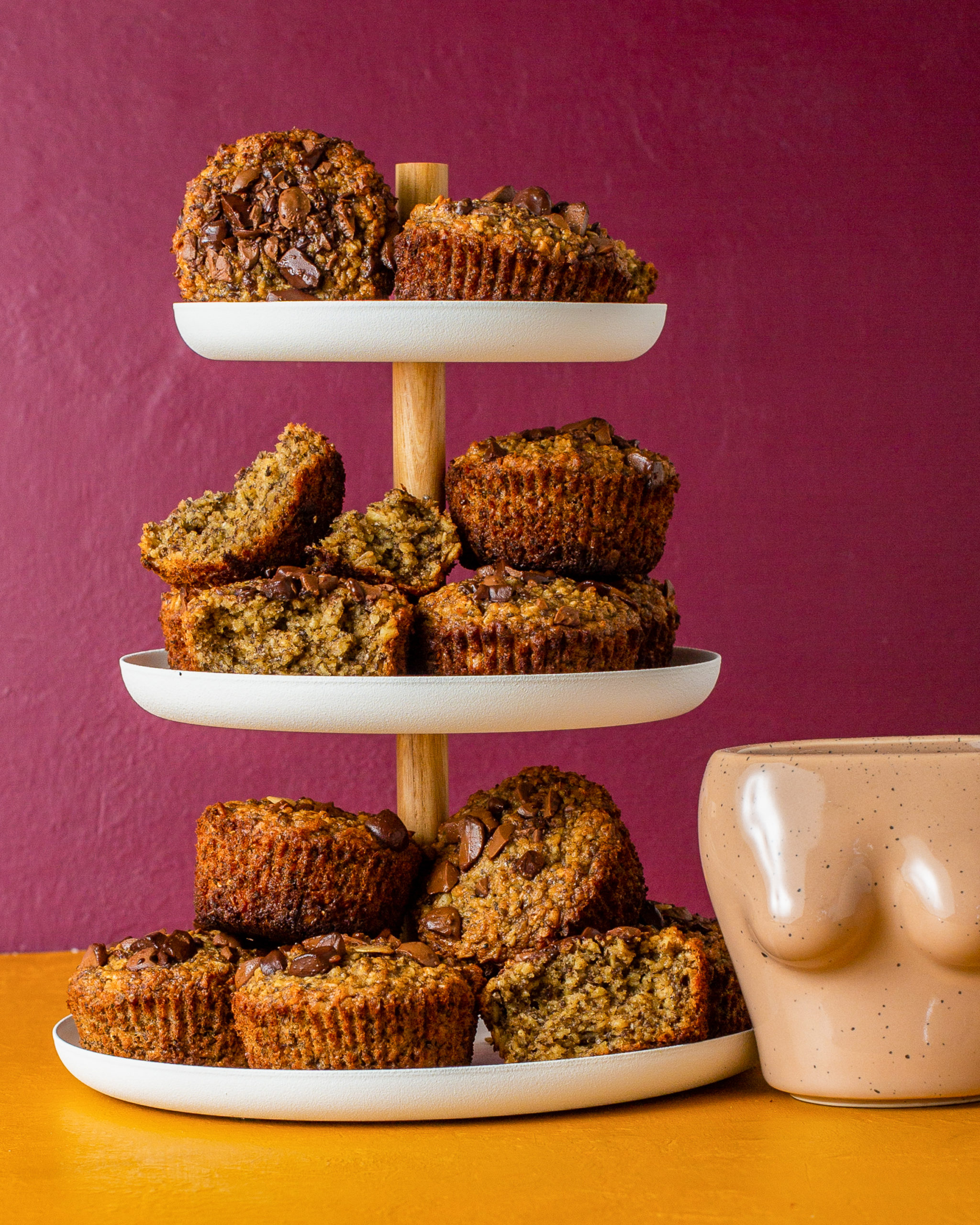
Get That Milk Flowin’ Spiced Banana Oat Chia Muffins
These are the perfect lactation muffins to meal prep for breakfast.
Oats and chia seeds are the lactation superfood ingredients in these muffins.This recipe also calls for bananas, a fruit that’s high in magnesium, a mineral that’s responsible for maintaining proper fluid balance – important during breastfeeding.
Get the full recipe here.
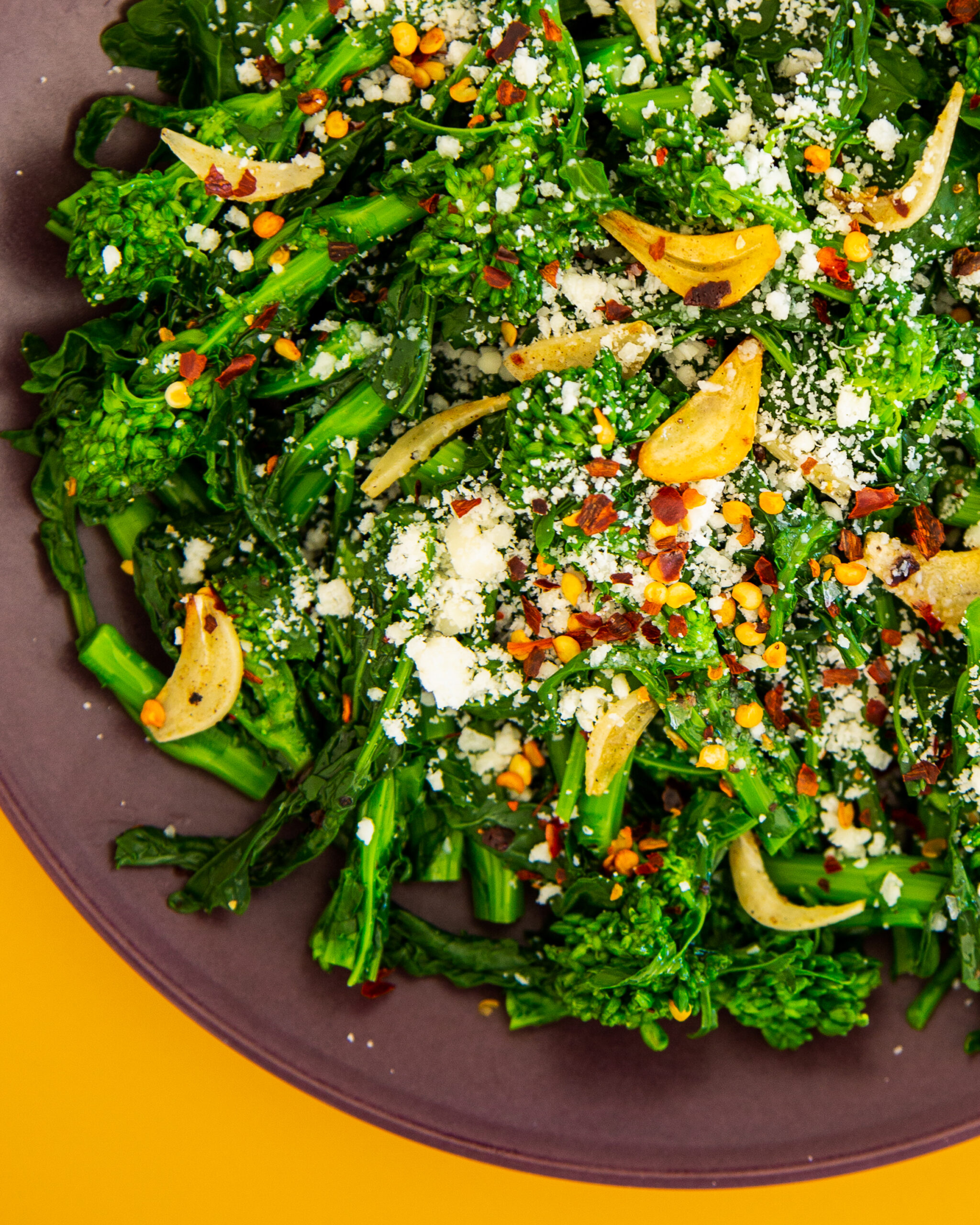
Jazzed Up Garlicky Broccoli Rabe
This is the perfect side to whip up to go with chicken or red meat.
Not only is this a healthy lactation recipe due to the broccoli, but also because of the garlic. Garlic has been shown to have a positive impact on breastfeeding. Studies noted that mothers who consumed garlic were able to breastfeed for longer.
Get the full recipe here.
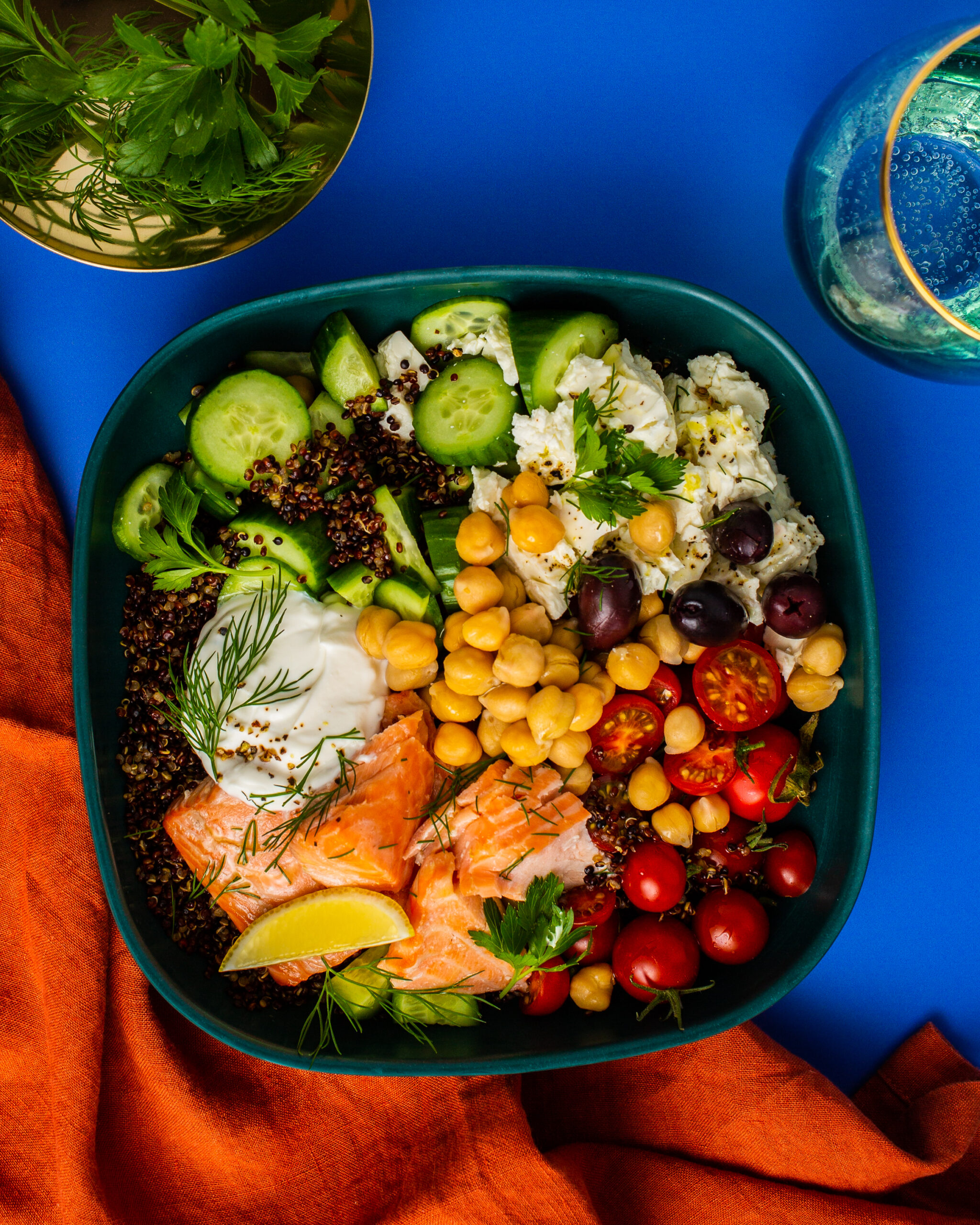
Sail Away Mediterranean Salmon Bowl
You’ll get omega-3 fatty acids and calcium from the salmon in this recipe, but there is another breastfeeding superfood, too: Chickpeas.
Chickpeas are a galactagogue that has been used for breastfeeding health as far back as Ancient Egypt! This is due to the legume’s protein and plant estrogen content.Get the full recipe here.
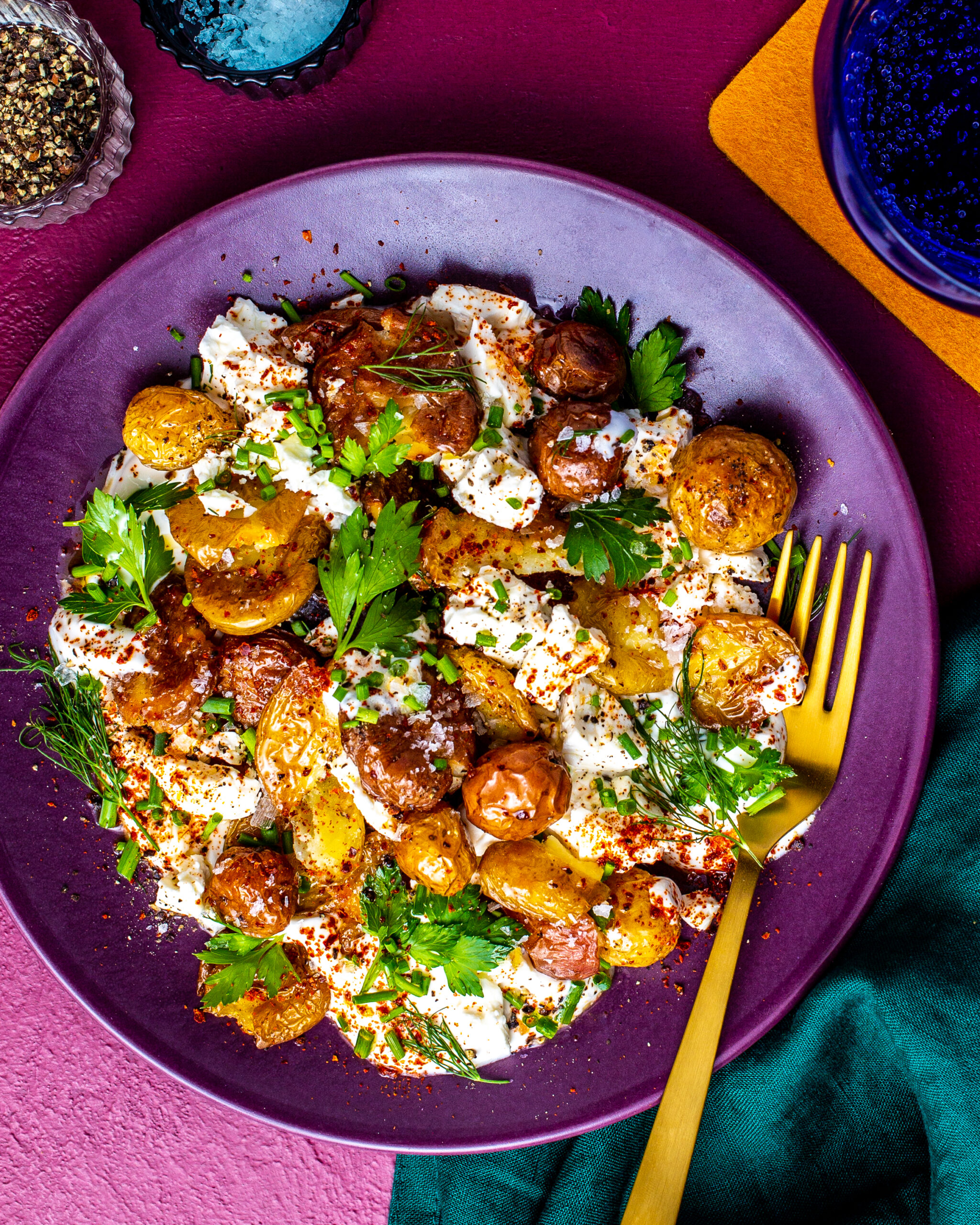
Crispy Garlicky Yogurty Dreamy Potatoes
Potatoes are high in magnesium as well as iron. According to WHO, anemia during the postpartum period may have long-term health implications for both the mother and baby. “Mothers with low iron stores at the time of delivery and following childbirth may experience fatigue, altered cognition and depressive symptoms.”Pair the potatoes with yogurt, a fantastic source of calcium. The American Journal for Obstetrics and Gynecology highlights the importance of consuming calcium-rich foods to replace maternal skeletal calcium stores and to positively affect fetal bone health.
Get the full recipe here.
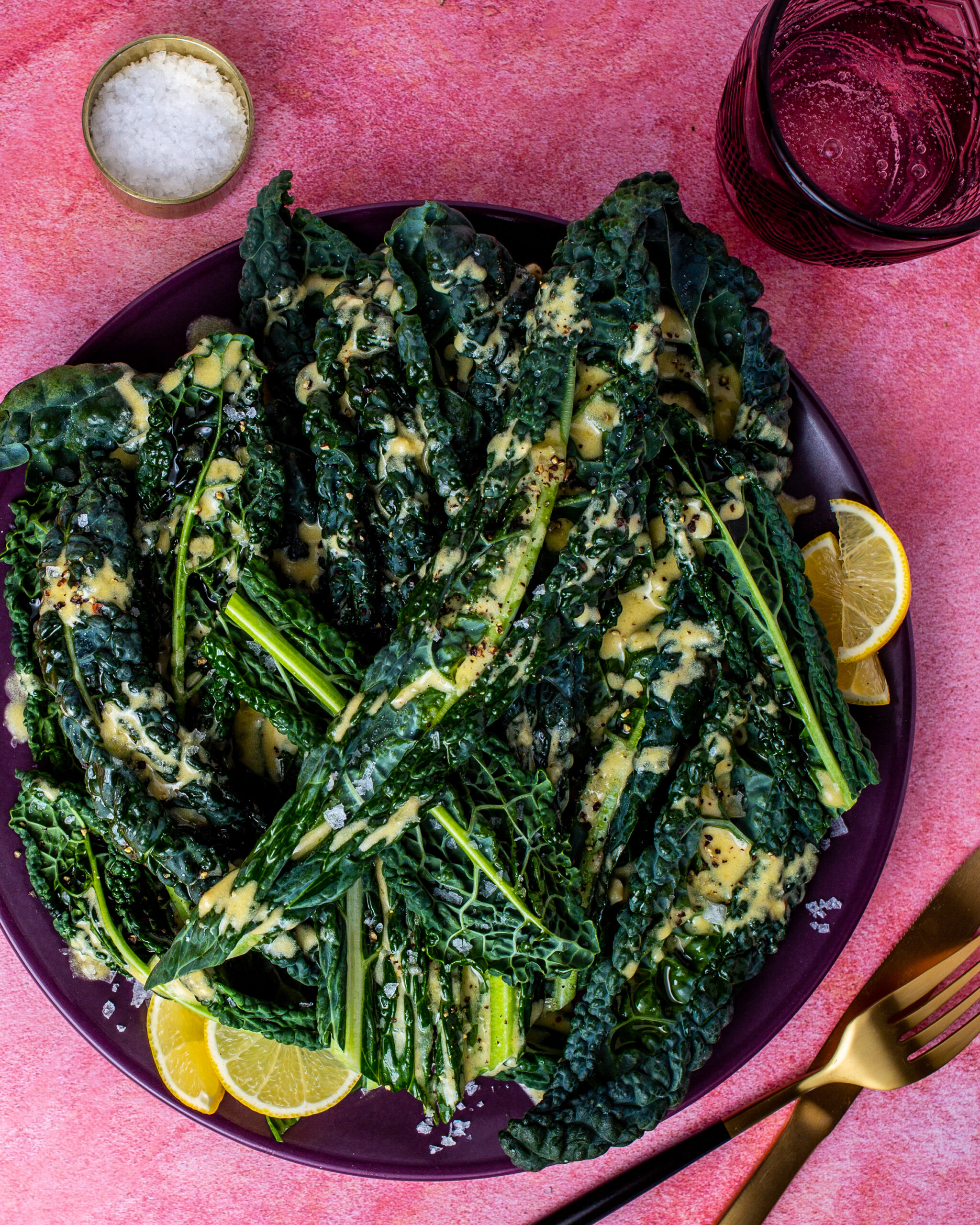
Cesarian Caesar
This recipe calls for anchovies. Not only is this fish a good source of omega-3 fatty acids, but it’s also rich in zinc.
Breastfeeding women need extra zinc, as during the postpartum period you’re at risk of a zinc deficiency. “For breastfed infants who will rely on breastmilk as their primary zinc source, a deficiency can cause poor immune function and impair physical and cognitive development,” says Verywell Family.
Get the full recipe here.
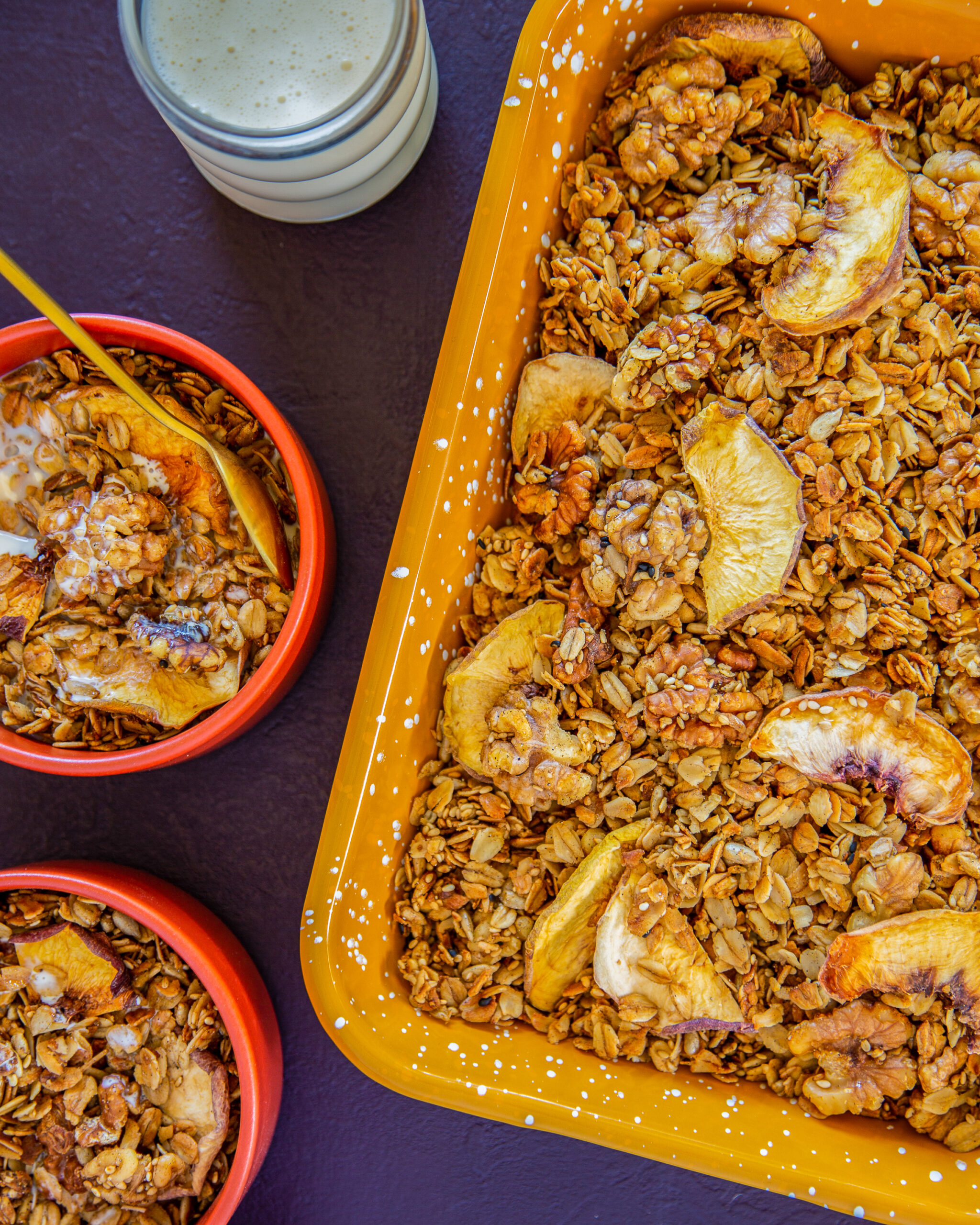
Everything’s Peachy Granola
Eating this granola is a fantastic way to increase your fiber content. Postpartum constipation is normal, and eating more fiber is a natural and healthy way to find relief.
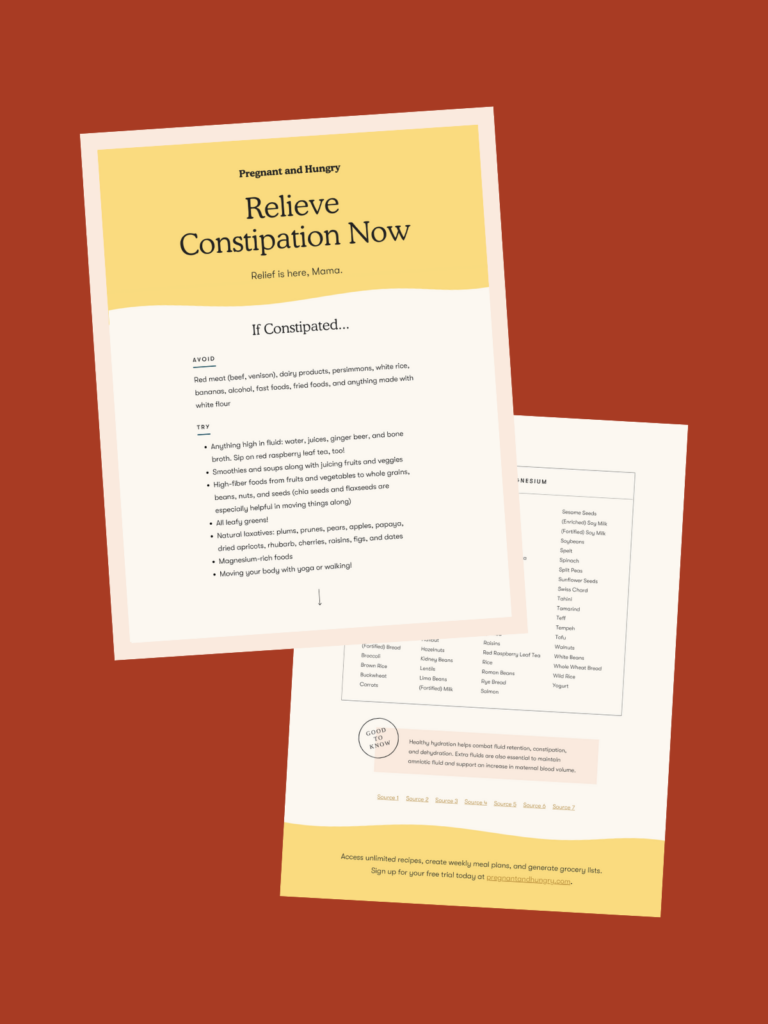
How to Relieve Constipation During Pregnancy
Dietary Remedies for Pregnancy Constipation Relief
Get the GuideConstipation can be a real pain in the butt. But luckily for you, we’ve got a whole resource that can help provide constipation relief during pregnancy. Download this guide to find out which foods will help get things moving along!
A peek inside:
- Which foods are best to avoid if you’re experiencing constipation
- Recommendations for activities to try and ingredients to buy
- A list of foods rich in magnesium (a mineral that helps relieve constipation!)
- The importance of staying hydrated
The walnuts and sesame seeds in this granola are good sources of vegetarian protein.
Protein is essential to support recovery from childbirth as well as the production of breast milk. Oats and sunflower seeds further boost the nutrition profile of this breakfast with an increase in magnesium and iodine.Get the full recipe here.
One of the best things you can do for yourself and your baby postpartum is to focus on nutrient-dense meals that support your recovery as well as breast milk production. Add the above meals to your postpartum meal plan!
